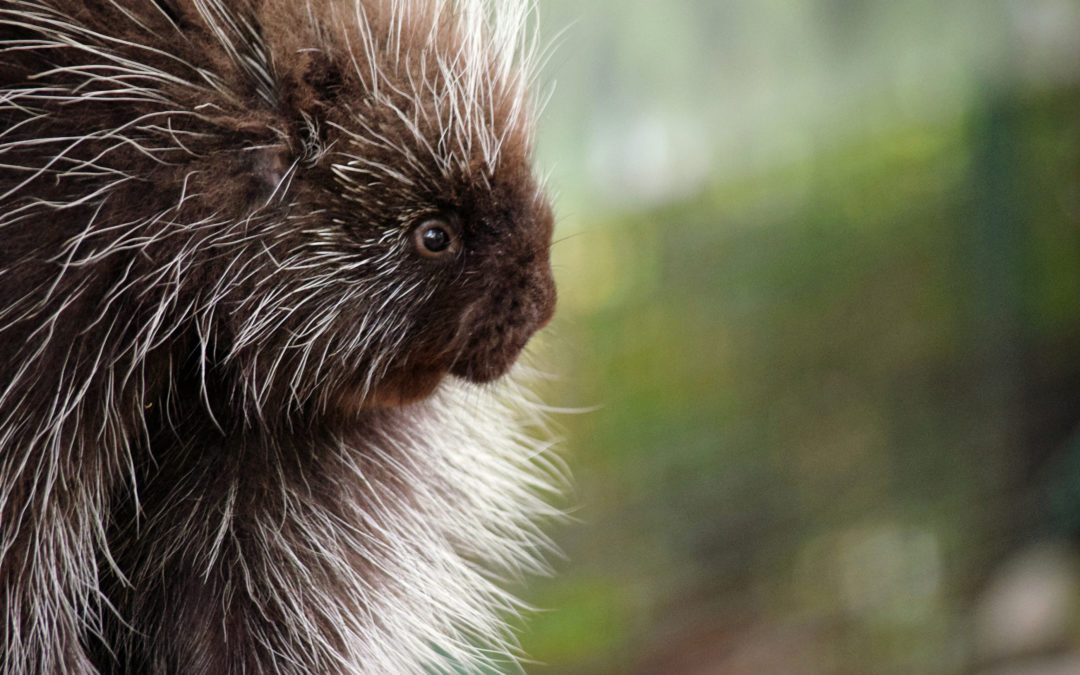Bioinspired research is a rising hope in the future of biomedical technology. Can better science and engineering overcome the clinical and commercial challenges to save billions of lives?
While nature has long served as a source of healing, nature is also inspiring the next generation of biomedical technology. Perhaps one of the greatest breakthroughs in this decade is gene-editing enabled by CRISPR, bacterias’ viral defense system. Together engineers, scientists, and clinicians are studying nature now more than ever to redesign patient care, rethink disease prevention, and redirect life-saving therapies to those who need it most.
This discipline has rapidly advanced since the mid-2000s, with biomimicry being directly incorporated into academic curricula: Johns Hopkins University offers a course for “Biomimetics in Biomedical Engineering”, and countless bioinspired labs are popping up across the world. Researchers from Ohio State University have used mosquitos as the top model for painless microneedles. A Dutch university bioinspired group created surgical tools based on the movement of octopuses and snakes that make complex surgery safer and more efficient.
Biomedical engineering is a mix of biology, physiology, chemistry, engineering, materials science, and a dash of science fiction. The excitement propelling bioengineers comes from the potential to save countless lives in the next evolutionary era of medicine. The foreseen success is highly disruptive. Until now, certain challenges like high-risk procedures, scar tissue development, and potential for infections seemed unsurmountable. Yet, thanks to the sticky feet of the gecko and the quills of a porcupine, bioengineers have designed a tape that can stick to the human tissues inside the body and redesigned surgical staples that can significantly minimize risk of infection.
If imitation is the sincerest form of flattery, then bioinspired biotech is the sincerest form of heist. The true genius of this methodology is in the recreation of complex systems by reductionist design. Inspiration from nature translates into recreating only the key functions of the biological system to meet a specific goal. It’s a unique feature that makes good medicine widely available for those in need. That’s the idea underlying artificial platelets. These blood cells are like your body’s construction workers, laying down the brick and mortar needed to patch up holes in your bloodstream from cuts and wounds. Platelets adhere to one another with the help of a special protein called fibrin in a domino-like cascade. The fibrin entagles platelets as they accumulate at the site of injury.
Within minutes of getting a cut or a scrap, your platelets are already forming a scab to prevent further blood loss. Yet in cases of traumatic bleeding as seen in car accidents, gunshot wounds, or even in surgery, the situation rapidly escalates with rapid blood loss. It’s a race against the clock to get the blood needed for survival from proper medical care, and no emergency medical response teams can carry blood products because of transport difficulties, limited storage/shelf life, and potential contamination.
SynthoPlate, a new biotechnology created by Case Western Reserve University’s biomedical engineering professor Dr. Anirban Sen Gupta, recreates the clotting and clumping function of platelets into a single nanoparticle-sized system. Together with former student Dr. Christa Pawlowski, they founded Haima Therapeutics in 2016 with the hopes of commercializing findings from their insightful research to treat blood-related ailments and bleeding through nature’s inspiration.
Dr. Sen Gupta has worked in bioinspired medicine for most of his career. He traces a curiosity-fueled journey of asking questions about the complex yet simple elegance of biology. One of his earliest projects, like so many other scientific endeavors, failed. This early scientific stalemate, says Dr. Sen Gupta, was a catalyst that helped him realize that he is interested in “the output that happens through the design of nature.”
Often biomimetic designs can successfully echo nature’s complexity, but in the highly competitive biotech industry, great medicine can easily fall short of ever reaching the patient due to high production costs and issues of scaling up manufacturing. Dr. Sen Gupta is interested in understanding how to reduce complex biological systems to their simplest function, making products feasible for commercialization. And he’s not alone as the Marie Kondo of biomedicine – serial bioinspirationalist entrepreneur Dr. Jeffery Karp describes this as radical simplicity. To biomedical companies like Haima, nature’s evolutionary innovation is not necessarily fit for the equally dynamic world of investor fundraising. But natural paradigms are.
Limited accessibility and availability of blood are pressing challenges to treat excessive blood loss. That’s why SynthoPlate is an artificial platelet substitute, not an exact replica. SynthoPlate focuses these two key functions of platelets, but is made of protein fragments called peptides instead of fully-formed proteins like a real platelet. In effect, it can perform the key functions of a platelet – clotting up an opening and clumping to one another – using much simpler biology that also makes it universally applicable regardless of blood type and is easily manufactured. As a cell therapy, SynthoPlate’s design also amplifies the body’s natural platelet response.
When time is the enemy, an artificial blood product could directly address these main obstacles seen in trauma at the point of injury. SynthoPlate could optimize the window of the first response as an initial treatment, keeping a patient alive until they can get access to a trauma bay with the necessary medical care. During an interview, Dr. Michael Bruckman, COO and interim CEO at Haima Therapeutics, emphasized how bioinspiration helped SynthoPlate become a universally applicable, scalable, and feasible solution.
SynthoPlate serves as a “bridge”, says Dr. Sen Gupta, in which the artificial product is good enough to supplement when the real product is unavailable or becomes extremely strained, such as in the case of urban mass casualties. Simply put, if you have two bags of blood products and two bags of the artificial version, you theoretically could stretch out the supply to eight total bags: a bioinspired tool that optimizes quality patient care for the most number of people. Peaking the interest of the Department of Defense, military applications are being explored for soldiers fighting at enemy lines.
Still in the clinical research stage, researchers are now studying to what degree synthetic platelets can substitute the real thing. But especially in remote locations where blood products and proper trauma care is not an option, an artificial blood product like SynthoPlate brings previously unavailable treatment to where it is needed most. The American RedCross recently expressed fears of a blood shortage amidst quarantine lockdowns and mounting public fear. With no currently available substitute, hospitals and doctors worry about surgical needs, trauma care, and cancer patients.
Before SynthoPlate can answer this urgent call to action, it must pass through the FDA’s multi-step approval process and source funding for commercialization. Dr. Bruckman has left his chemical engineering lab behind to focus on bringing SynthoPlate to market. Like nature itself, there’s an evolution to how a biotech startup develops its story. For example, labelling SynthoPlate as an artificial cell therapy will attract different investors than if it is called a biomimetic nanotechnology. Another possibility is to tag it as an intravenous hemostatic product, bringing different biases and connotations into play for industry experts. For Dr. Bruckman, it’s about helping the product’s tangible potential resonate with the investor.
Be it a pandemic, a catastrophe, a warzone, or an overwhelmed hospital, Haima’s synthetic platelet technology has the potential to provide higher stability, portability, scalability, and logistics than natural blood products. Dr. Bruckman points out that good science must also look like a great investment. For bioinspired medical tech, there is an additional challenge of overcoming its “synthetic” label. Synthetic often triggers a comparison to the natural thing itself. This demands a greater responsibility for scientists to explain, brand, and communicate quite complex science to investors, consumers, and the pharmaceutical industry.
Both Dr. Bruckman and Dr. Sen Gupta voiced a central principle of biomimicry in describing their work: the evolution of translating inspiration requires an adaptability to clearly portray the vision of better medical care. Considering and connecting with the investment perspective is equally as important as the research itself, if not more. Surviving the different stages of funding is a daunting, long-term commitment.
“We don’t know if the journey will be successful or not, but just the journey itself is very rewarding because we learn very many things in the context of doing biomimicry,” explains Dr. Sen Gupta. And it’s the bold people of science taking this journey that continue to offer hope for generations to come.
This is Part 1 of a 3-Part article series about nature-inspired medical innovation.
Interested in learning more about bioinspiration in the medical industry? Tune in on Thursday, June 18 at 1 pm MT with experts Dr. Jeffrey Karp and Dr. Alexandra Ralevski for the Biomimicry Institute’s Fireside Chat: Getting Unstuck: Tapping Into Nature for Problem Solving.
 Isabelle Seckler is a second-year student at Columbia University in New York City. She intends to study sustainable development along with a pre-medical track with the hopes of advancing community prosperity at the intersection of our built and natural environments.
Isabelle Seckler is a second-year student at Columbia University in New York City. She intends to study sustainable development along with a pre-medical track with the hopes of advancing community prosperity at the intersection of our built and natural environments.
Twitter: @IzzySeckler | Instagram: @isabelle.seckler

